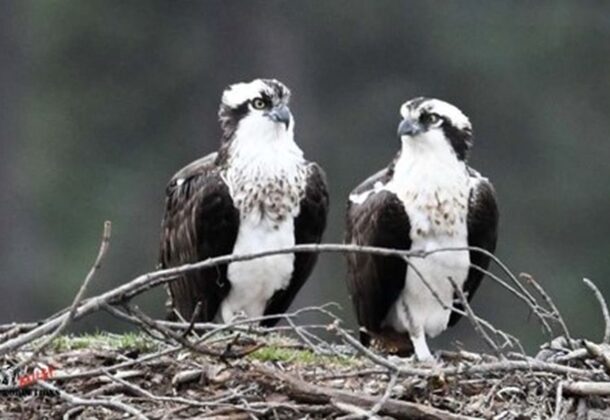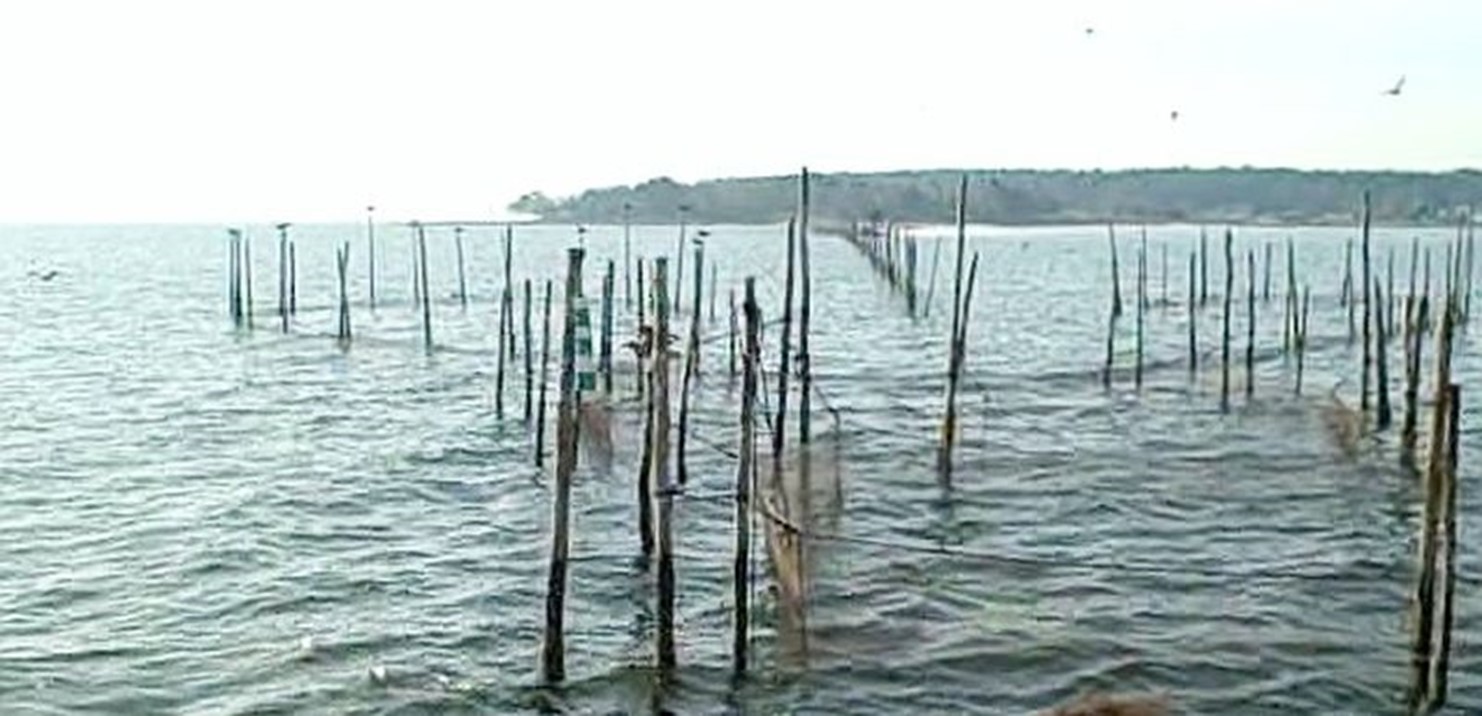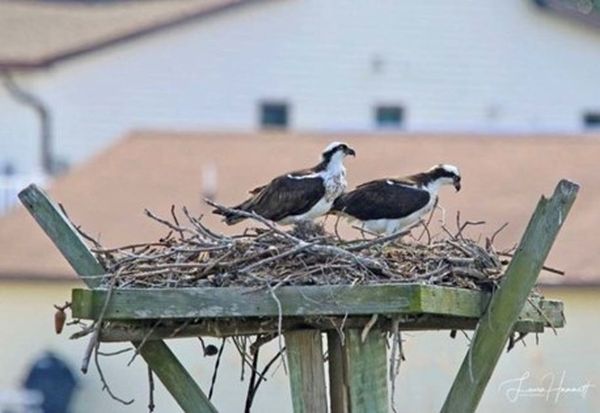Message from the Cap’n — Ospreys Return to the Chesapeake

Ospreys return to the Chesapeake Bay after wintering in South and Central America. Photo by Ron Bailey.
Message from the Cap’n is a compilation of fishing advice, waterman and weather insights, Chesapeake lore, and ordinary malarkey from the folks who keep their feet wet in the Potomac and St. Mary’s rivers.
From the Interpretive Buoy System the water temperature in the Lower Potomac is moving up above 45 degrees Fahrenheit and the salinity hovering around 13 PSU (practical salinity unit). What this means is conditions are right for the Osprey’s return to the Chesapeake!
The Audubon Society notes that the osprey is also known as the fish hawk, also the favored name on St. George Island, which locals consider the “nesting capital of the Chesapeake.” More than 60 nesting pairs were counted in 2019 on St. George Island. And they have only increased.
This year’s first fish hawks returned to Island Creek on St. George Island on March 8, 2022. Once again, they prove the saying, “Ospreys are here by St Patrick’s Day.”
They caught a nice “drafting breeze” that week and again this week and there have been many sightings all around the Potomac and Patuxent rivers.
Fish hawks arrive after flying about 2,300 miles from Venezuela or Columbia, South America, via the 77th parallel. Every spring, after their first spring, they fly back to the area where they were born. The males usually come first and wait for their mates to arrive. But they aren’t all flying up here to meet back up with their mate, they’re returning to their nest.
Osprey possess nest site fidelity, meaning once they establish their nest, they will return year after year to that nest. If their nest mate fails to return as the mating season commences, ospreys will choose another mate and that pair will continue to meet up at the same nest year after year. If the nest is destroyed, for example if the tree holding the nest is felled, the pair often go to great lengths to nest as near the original site as they can.
Local St. George Island custom dictates that nest building materials be provided for the birds when they get here. Some place pieces of cloth in the fields. I use straw to help accommodate their needs. It is awesome to watch them dive down and grab material for their nests. Many a glove, cap, or handkerchief have been lost in this way. [Senora Capitan casts doubt upon this theory of glove, cap, or kerchief loss.]
The pair brood from one to four eggs in April, usually three. The male shares nesting duty, allowing the female to feed. The ospreys in front of our home last year changed the guard around noon every day.
Both sexes tend the nest to keep predators at bay, which include other birds — such as crows, described here by PBS Nature — as well as any mammals or reptiles able to reach the nest.
The osprey raise their hatchlings to fledgings from April through July, depending on the weather and food supply. Both parents must work ceaselessly to feed their young. If food supply is short usually the first to hatch will overpower the younger siblings to secure the most food, sometimes to the demise of the others. The female does not parcel out the food evenly, usually feeding the most aggressive chick. This is the best way for at least one chick to survive a year of limited food supply.
Our local pound nets offer a constant supply of fish for their diets. They have terrific eyesight and dive to catch fish with their talons.
By July, the young birds are hopping about the edges of the nest, strengthen their wings and practicing extensively before their first flight. They are always interesting to watch during their first flights, and frequently comic. Watching a fish hawk take off from water gives you an appreciation of the incredible strength in their wings.
After the young birds can fish to feed themselves, the adult birds leave them here in the fall and return to South America to overwinter. While some of the young stay as late as November, particularly during mild autumns, they will be gone as well before cold weather hits. Those born this year won’t return until spring 2024, spending their first two years in their winter homes.
The average lifespan of the osprey is seven to 10 years, according to Wikipedia, but there are records of some as old as 30 years. Steve Cardano banded osprey of the Patuxent River for decades and during the 1980s a band from an osprey carcass found in South America and returned dated the bird as 22 years old. All About Birds offers guidance on identification and more observations about the osprey.
Till next time, remember “It’s Our Bay, Let’s Pass It On.”
To learn about tours and trips into the Chesapeake, keep in touch with Fins + Claws on Facebook . Catch up on Messages from the Cap’n Member Page. Please visit Cap’n Jack’s lore and share with your social media sites. Or reach him here: [email protected] or 240-434-1385























